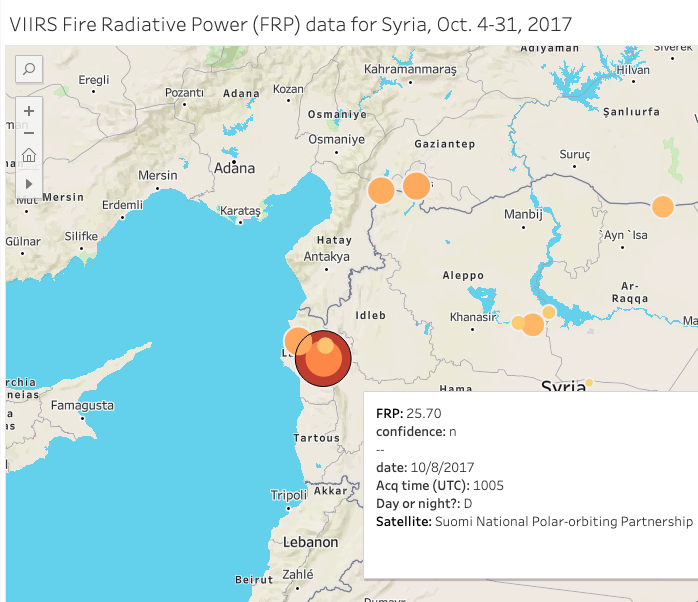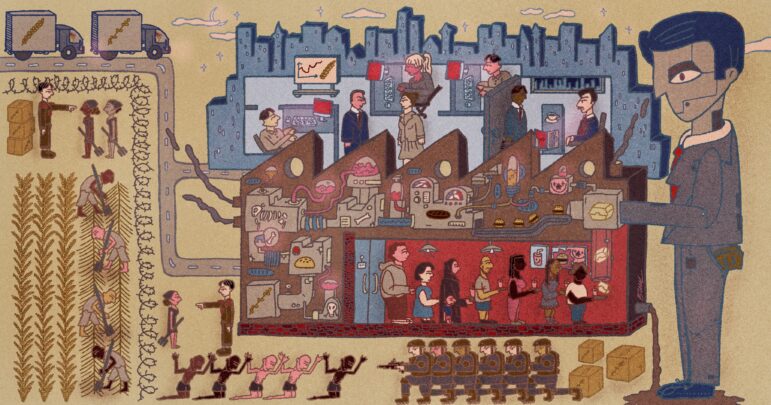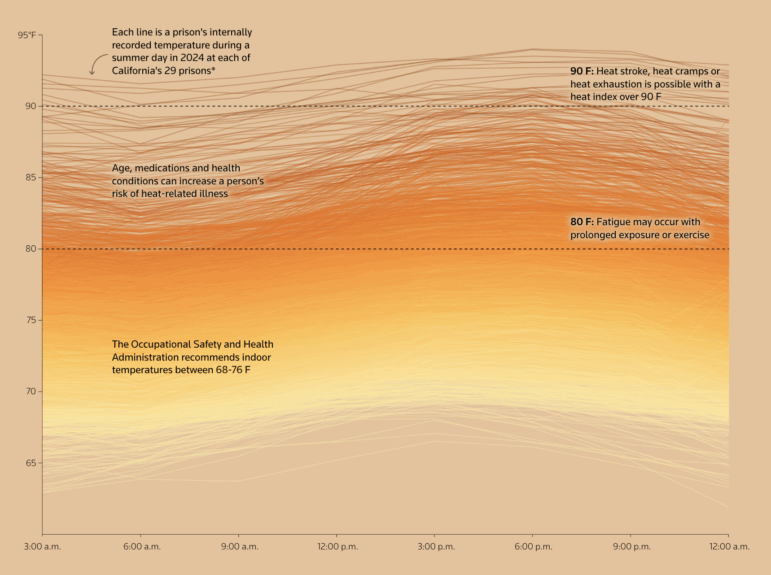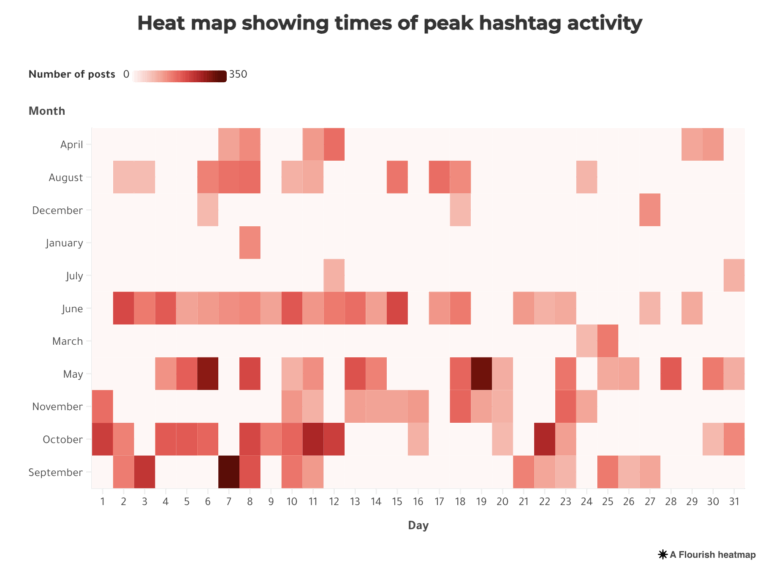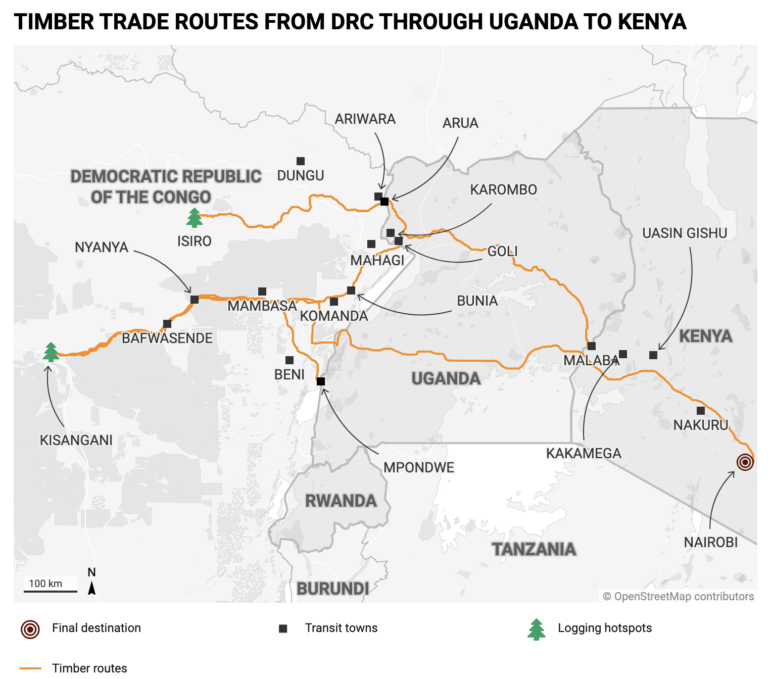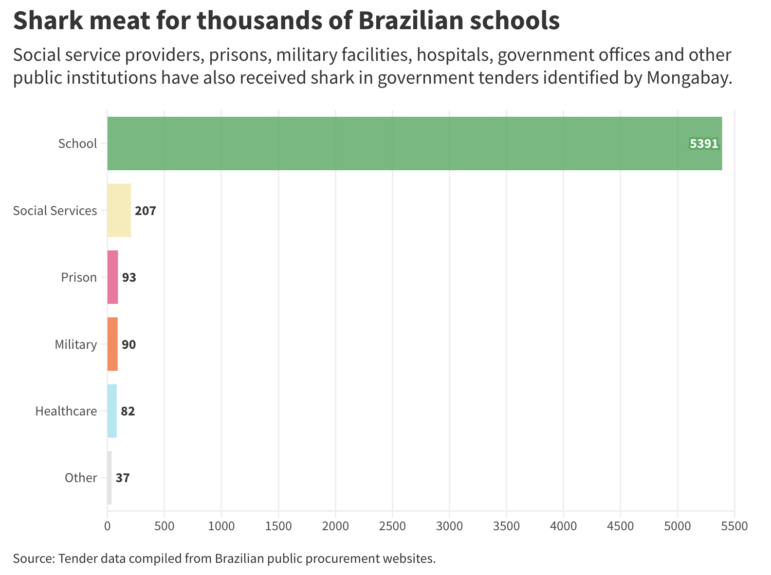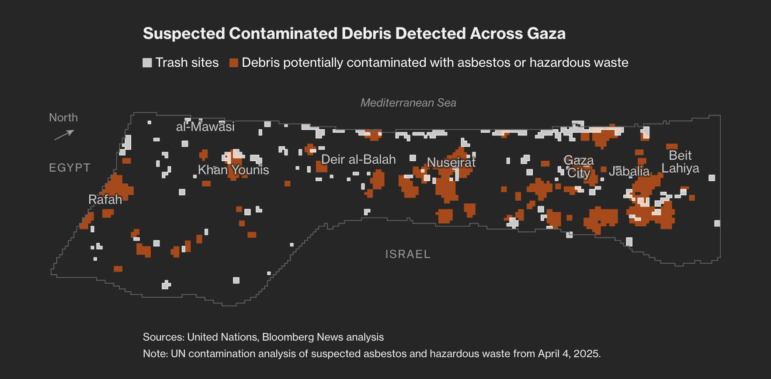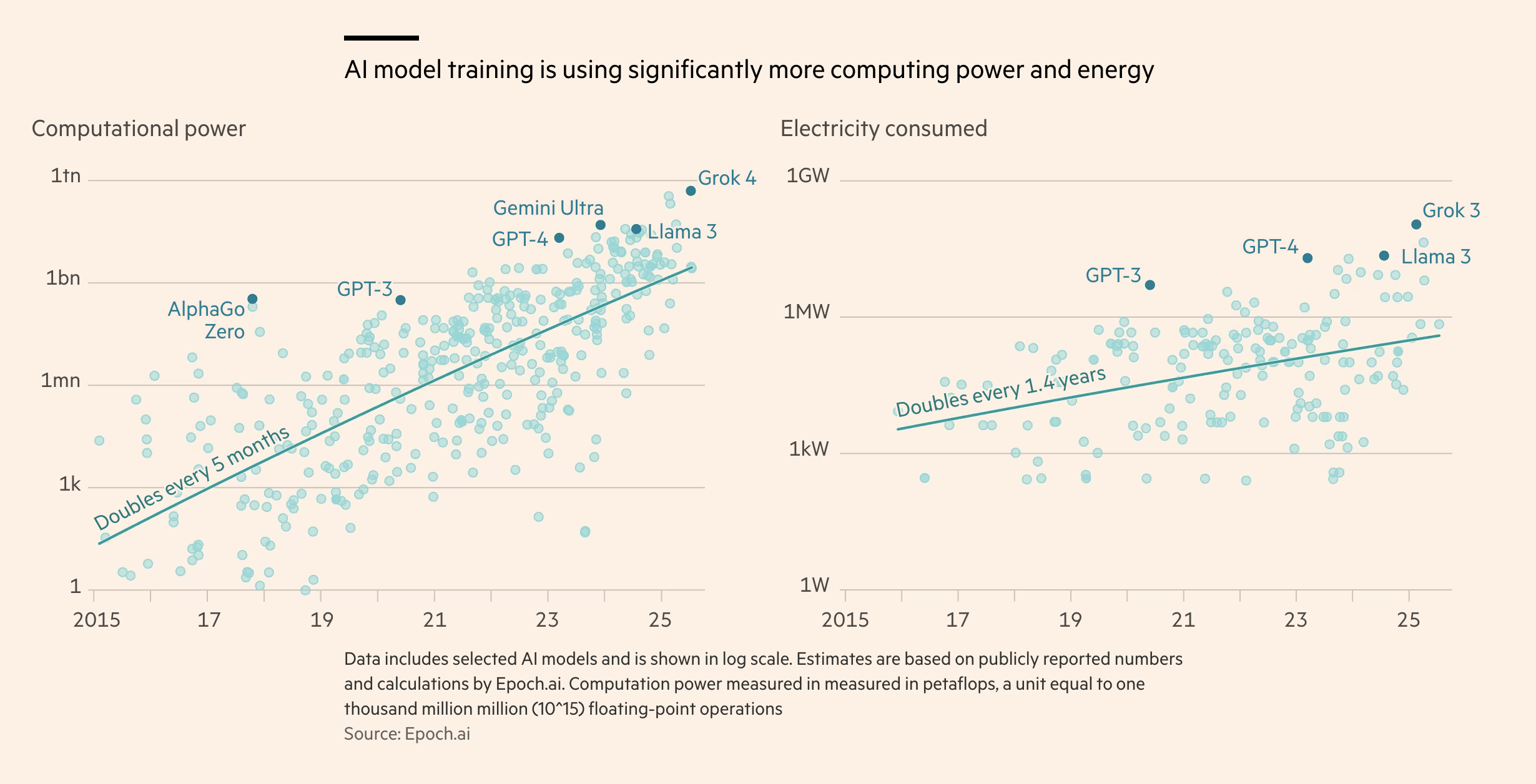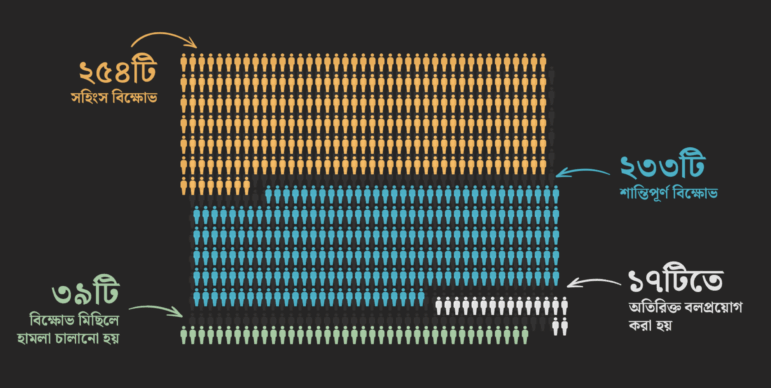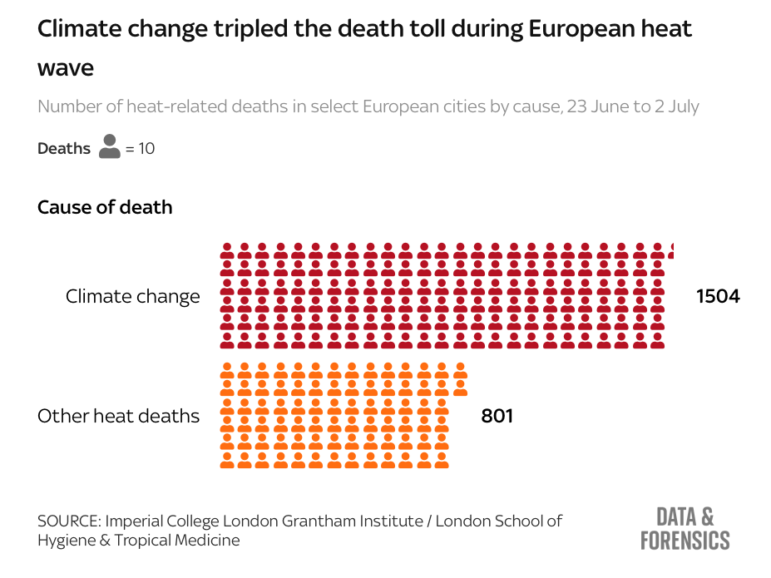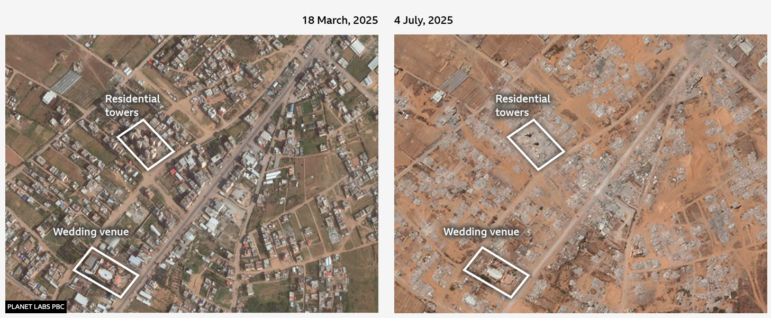

Reporters marked the 80-year anniversary of the bombings in Hiroshima and Nagasaki by creating a data visualization to remember the victims. Here, early fatalities are broken down by cause of death. Image: Screenshot, South China Morning Post
Extreme Heat in US Prisons, Tremors and Tsunamis, DRC’s Illegal Timber Trade, Shark Meat in Brazilian Schools
An investigation by Reuters into scorching temperatures in US penitentiaries has found that inmates are living in temperatures up to 100°F (37.7 °C) during the summer months. The investigation illustrates why temperatures can become so high in cells and the significant health impacts on those inside. In this edition of our data journalism top 10, covering stories from July 23 to August 6, we also share an ARIJ investigation into social media hashtags that are driving climate conspiracy theories in the Gulf, a report by InfoNile on the illegal timber trade in the DRC, and a piece by Mongabay exploring how shark meat is being fed to Brazilian school children.
How Excessive Heat in US Prisons Affects Inmates
As summer temperatures peak across the northern hemisphere, a team at Reuters investigated the dangerous heat conditions inside US prisons, where in the summer, cell temperatures can reach 100°F (37.7 °C). More than 1.2 million people are held in federal and state prisons, many of which were built with poor ventilation, minimal tree cover, and antiquated infrastructure — all factors that worsen heat retention. In this data-driven investigation, Reuters compiled and analyzed air conditioning and indoor temperature data from public records requests to all 50 states to answer the question: how hot does it get inside prisons? Using digital illustrations to recreate prison cells, interviews with incarcerated individuals, and research from the University of Arizona and the Brown Institute for Media Innovation at Columbia University, the investigation reveals that nearly half of state prisons across 29 states have only partial or no air conditioning in inmate housing areas. Advocates say the hot conditions “amount to unfair treatment and excessive punishment.”
Social Media Hashtags Spread Climate Conspiracies
In partnership with Code for Africa, ARIJ analyzed 20,000 social media posts and interactions from March to December 2024, focusing on a cluster of hashtags spreading disinformation and promoting climate change conspiracy theories. The investigation revealed that hashtags were predominantly pushed by accounts with ties to oil interests in Gulf states, particularly in Kuwait and Saudi Arabia, with certain hashtags being used millions of times since 2018. The analysis by ARIJ uncovered a coordinated effort to amplify climate conspiracy narratives through networks of automated and semi-automated accounts. Activity around these hashtags often spiked during key international and regional climate events, which, according to ARIJ, directly contradicted the official climate stances of these countries.
Why Kamchatka’s Earthquake Didn’t Do Much Damage
On July 30, a powerful magnitude 8.8 earthquake struck off Russia’s Far Eastern Kamchatka coast — one of the strongest quakes recorded in the past century. The seismic event triggered tsunami waves that reached parts of Russia, several Pacific Islands, and the west coast of the US, but despite warnings stretching across the Pacific, the impact was not as bad as feared. Drawing on data from the United States Geological Survey (USGS) and the National Oceanic and Atmospheric Administration (NOAA), DIE ZEIT visualized the earthquake’s epicenter, the subsequent tsunami alerts issued to neighboring countries, and explained the science behind tsunami formation in the wake of such massive geological disruptions.
The ‘Illegal’ Timber Making its Way into the DRC’s Timber Supply Chains
An investigation by InfoNile, in collaboration with Global Forest Watch and the Pulitzer Center, delves into the “murky and multilayered” mahogany trade to explore how timber illegally harvested in the eastern Democratic Republic of Congo (DRC) is being smuggled through Uganda into Kenya. Kenya’s 2018 ban on logging indigenous hardwoods created a severe shortage, now largely filled — officially and unofficially — by timber from the DRC. While official imports reached 68,000 cubic metres, the true volume is believed to be far higher. Reporters mapped timber trade routes and created graphs to visualize primary forest loss in the region. The investigation, underpinned by source interviews, finds that in some provinces loggers evade regulation through forged permits, elite protection, and armed group collusion.
Shark Meat Is Being Fed to Children in Brazil
Brazil is the world’s largest importer of shark meat, and a lot of it is ending up in government-funded meals served to school children, hospital patients, military personnel, and public workers, despite widespread concerns that mercury and arsenic — found in high levels in shark meat — can cause health problems for young children. Supported by the Pulitzer Center’s Ocean Reporting Network, Mongabay investigated this supply chain and uncovered serious public health and environmental concerns. Shark meat was identified in 1,012 government tenders across 10 Brazilian states, while journalists identified 5,900 public institutions named as possible shark meat recipients. The species was rarely specified, raising the risk that endangered sharks and rays are being served without people’s knowledge. Reporters spent months analyzing data from municipal and state transparency portals, uncovering more than 5,400 metric tons of shark meat worth over 112 million reais (US$20 million) in awarded contracts since 2004.
A team at Bloomberg Green — the news agency’s environmental and climate-focused division — has investigated the environmental fallout of the war in Gaza, which reporters say is “compounding the humanitarian crisis in the territory.” Satellite analysis from June 2025 identified nearly 350 informal dump sites, many of them near shelters or water sources. The findings point to widespread contamination and waste accumulation. Damaged infrastructure and industrial debris have polluted soil and groundwater, and 55 million tonnes of toxic rubble, including asbestos, pose long-term health risks. Using satellite imagery and machine learning models trained on pre- and post-conflict images, Bloomberg mapped tent clusters and waste sites across the Strip.
The Human Toll of the World’s First Nuclear Attacks
Eighty years ago, in August 1945, the US dropped atomic bombs on the Japanese cities of Hiroshima and Nagasaki. The bombings occurred in the “final throes” of the war, but caused the deaths of tens of thousands of people and widespread devastation. To honour the victims, the South China Morning Post created a visualization using a Japanese symbol of peace — an origami crane — to help depict the human cost of the bombings. Using data from the Hiroshima Peace Memorial Museum, the International Campaign to Abolish Nuclear Weapons (ICAN), and the United States Strategic Bombing Survey, the team illustrates how many lives were lost in each city — including some 38,000 children — and detail the devastation that the bombs wreaked on the healthcare infrastructure. Alongside those killed in the initial explosions were many people who developed illnesses related to radiation exposure after the event. A chart at the end of the emotive visualization puts into context civilian casualties by country as a result of World War II.
The race for AI space is on as companies and governments plough billions of dollars into the construction of data centers. This article from the Financial Times — the first in a three-part series exploring the surge in interest in AI capacity building — explores how the “quest for superintelligence is spurring a data center boom.” Reporters mapped the proliferation of clusters of data centres in the US as companies like Amazon, Microsoft, and Google attempt to fine-tune their AI models. The FT team also visualizes how building these facilities and AI models will be more “energy-guzzling” than power grids, telecoms networks, and cloud computing systems.
Investigating the Death Toll from a Revolution
The 2024 July Revolution in Bangladesh saw mass protests and an uprising that shook the country. What began as student protests against a controversial job quota system quickly escalated into a nationwide movement demanding broader political change. The crackdown saw thousands injured, and an estimated 1,500 killed. Using data from ACLED, the UN, and government data, BBC Bengali used a scrollytelling visual to map the number of people killed and injured in the uprising and to look back at a series of events which ultimately brought down Prime Minister Sheikh Hasina’s government after 16 years in power.
Pop Songs Were Getting Shorter…
Pop songs grew shorter during the streaming and TikTok era, averaging just three minutes and 12 seconds by 2019, according to this report. Artists began testing song snippets on TikTok, often dropping traditional elements like intros and bridges to hook listeners faster. However, by 2025, song lengths rebounded to nearly three and a half minutes with longer tracks finding renewed popularity. Using data from Spotify and Genius, the BBC also tracked a shift in emotional tone. UK chart data revealed 2024 was the “happiest” year for pop since 2009. This analysis drew on Spotify’s catalogue of musical metadata to test a song’s “emotional valence” score, which measures positivity based on key, rhythm, and lyrical tone.
Hanna Duggal is a data journalist at AJ Labs, the data, visual storytelling, and experiments team of Al Jazeera and a GIJN contributor. She has reported on issues such as policing, surveillance, and protests using data, and reported for GIJN on data journalism in the Middle East, investigating algorithms onTikTok, and on using data to investigate tribal lands in the US.

